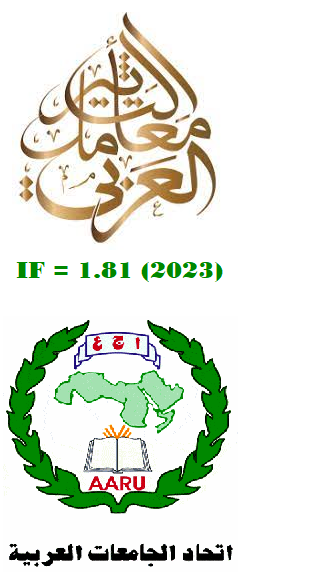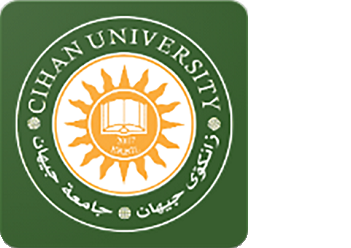Measuring Students' Critical Thinking
A Critical Review Article
Abstract
Staring from the increasing importance of Critical Thinking (CT), playing a key role in learning English as a second language, aiming to develop the educational situation in Kurdistan Region and Iraq as well as raising the awareness of the CT, and being one of the most prominent 4Cs the researcher has conducted this paper that examines three studies, their names will be mentioned afterward, in the field of critical thinking. Each study has got its own methodology, instruments, and goals so it has been a must to examine also to analyze the research methodologies, the findings, the discussions, and the research ethics. And, the researcher has tried to set a compromise among the findings.
Downloads
References
Alderson, J., & Banerjee, J. (2001). Language testing and assessment (Part I). Language Teaching, 34, 213-236.
Ali, O.A., Al-Salami, Q.H., Kamar, S.H. (2017). Financial Statistics (Arabic Edition). 1st ed. Baghdad, Iraq: Alwan-Library.
Al-Mahrooqi, R., & Denman, C.J. (2020). Assessing students’ critical thinking skills in the humanities and sciences colleges of a Middle Eastern university. International Journal of Instruction, 13, 783-796.
Bachman, L.F. (1990). Fundamental Considerations in Language Testing. Oxford, United Kingdom: Oxford University Press.
Banerjee, S.C., Greene, K., Magsamen-Conrad, K., Elek, E., & Hecht, M.L. (2015). Interpersonal communication outcomes of a media literacy alcohol prevention curriculum. Translational Behavioral Medicine, 5(4), 425-432.
Beyth-Marom, R., Novik, R., & Sloan, M. (1987). Enhancing children’s thinking skills: An instructional model for decision-making under certainty. Instructional Science, 16(3), 215-231.
Cohen, L., Manion, L., & Morrison, K. (2002). Research Methods in Education. United Kingdom: Routledge.
Crocker, L., & Algina, J. (1986). Introduction to Classical and Modern Test Theory. Orlando, FL: Holt, Rinehart, and Winston.
Ghadi, I.N., Bakar, K.A., Alwi, N.H., & Talib, O. (2013). Measuring critical thinking skills of undergraduate students in universiti Putra Malaysia. International Journal of Asian Social Science, 3, 1458-1466.
Gough, N. (1991). Narrative and nature: Unsustainable fictions in environmental education. Australian Journal of Environmental Education, 7, 31-42.
Harris, D. (1969). Testing English as a Second Language. New York: McGraw-Hill.
Henning, G. (1987). A Guide to Language Testing: Development, Evaluation,Research. South Carolina: Create Space Independent Publishing Platform.
Johnson, D.M. (1992). Approaches to Research in Second Language Learning. New York, USA: Longman. p. 16-253.
Robinson, I.S. (1987). A Program to Incorporate High-Order Thinking Skills into Teaching and Learning for Grades K-3. Washington DC: Institute for Education Sciences.
Ross, K.N. (1978). Sample Design for Educational Survey Research. Oxford:Pergamon Press.
Shareef, L.B., & Abbas, N.J. (2021). A study of the teaching-learning challenges of the 21st century at university ELT classroom. Cihan University-Erbil Journal of Humanities and Social Sciences, 5, 16-24.
Wale, B.D., & Bishaw, K.S. (2020). Effects of using inquiry-based learning on EFL students’ critical thinking skills. Asian-Pacific Journal of Second and Foreign Language Education, 5, 1-14.
Wisniewski, J.J., Genshaft, J.L., Mulick, J.A., & Coury, D.L. (1987). Test-retest reliability of the revised children’s manifest anxiety scale. Perceptual and Motor Skills, 65, 67-70.
Copyright (c) 2022 Imadin M. Zannrni

This work is licensed under a Creative Commons Attribution-NonCommercial-NoDerivatives 4.0 International License.
Authors who publish with this journal agree to the following terms:
1. Authors retain copyright and grant the journal right of first publication with the work simultaneously licensed under a Creative Commons Attribution License [CC BY-NC-ND 4.0] that allows others to share the work with an acknowledgment of the work's authorship and initial publication in this journal.
2. Authors are able to enter into separate, additional contractual arrangements for the non-exclusive distribution of the journal's published version of the work (e.g., post it to an institutional repository or publish it in a book), with an acknowledgment of its initial publication in this journal.
3. Authors are permitted and encouraged to post their work online (e.g., in institutional repositories or on their website) prior to and during the submission process, as it can lead to productive exchanges, as well as earlier and greater citation of published work (See The Effect of Open Access).









